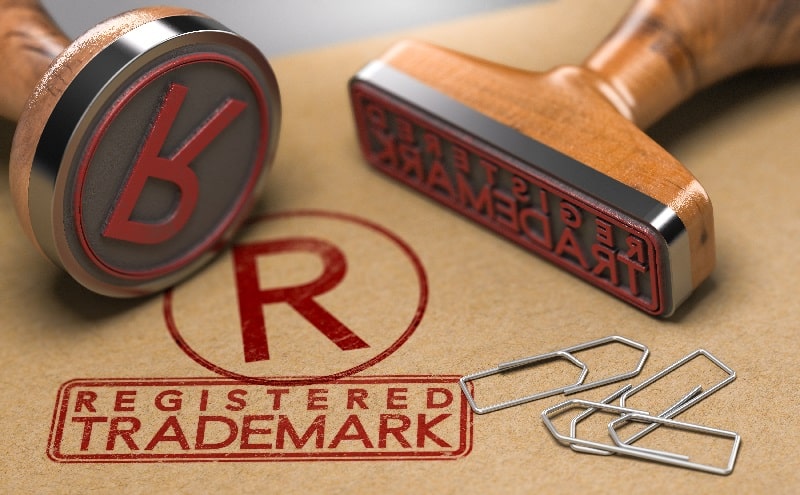Australian and New Zealand patent examiners typically frown upon the use of trade marks in claims. Primarily, a trade mark is a sign that denotes origin, and a trade mark-branded product may vary from jurisdiction to jurisdiction or over time. As such, Australian and New Zealand examiners normally raise clarity objections in view of the use of trade marks in patent claims during examination. With a claim directed to or encompassing a pharmaceutical substance, it is often possible to amend the claim to replace the brand name of a drug with its generic name (i.e. the International Non-Proprietary Name or INN) without triggering an added matter objection. However, in some circumstances (e.g. where there is no INN), an alternative amendment strategy may be necessary.
The Australian Patent Office decision in MGP Ingredients, Inc v Manildra Milling Corporation [2023] APO 32 (31 May 2023) highlights there may be circumstances in which a trade mark can exist within a claim, as long as the applicant can provide unambiguous evidence that the skilled person would have knowledge of the properties of the claimed product, that the product has not changed over time nor evidence of foreseeable changes in the future.
In this particular instance, the patent applicant (Manildra Milling Corporation “Manildra”) sought to claim a method of producing gluten-free starch comprising a series of steps, one of which included the use of proprietary enzyme, Alcalase®.
What is Alcalase®?
Alcalase is a proteolytic enzyme produced by submerged fermentation of a selected strain of Bacillus licheniformis. The main enzyme component, Subtilisin A, is an endoproteinase which is available from commercial suppliers in high quality forms.
Patent Rules
According to IP Australia’s Patent Manual of Practice and Procedure:
“A claim that uses a trade mark to identify an element of an invention may not be clear through an inability to establish the precise scope of the claim. Where the scope of a claim is uncertain or ambiguous as the result of the use of a trade mark, examiners should object that the claim lacks clarity” [2.11.5.7A]
Further:
“A trade mark is used to identify the source of origin of a good, not its properties. For example, the composition of laundry detergents sold under a particular trade mark or proprietary name are likely to vary in different regions of Australia (due to differences in the ‘hardness’ of local water supplies), as well as change over time” [2.11.3.8A]
Is a Trade Mark a Moveable Target?
Manildra submitted that the use of the mark “Alcalase®” within the claim specifically and unambiguously refers to the food grade product known as Alcalase® which is suitable for producing a gluten-free starch for human consumption. Conversely, MGP Ingredients, Inc (the opponent) submitted that Alcalase® was a proprietary name applied to a range of products.
In determining whether the use of Alcalase® resulted in a lack of clarity, the hearing officer looked to Flexible Steel Lacing Company v Beltreco Ltd, commenting at [81][1]:
“Lack of precise definition in claims is not fatal to their validity, so long as they provide a workable standard suitable to the intended use. The consideration is whether, on any reasonable view, the claim has meaning. In determining this, the expressions in question must be understood in a practical, commonsense manner. Absurd constructions should be avoided and mere technicalities should not defeat the grant of protection.”
The hearing officer summarised the overarching view that ‘the concern is that a feature defined by a trade mark is indeterminate over time given that the manufacturer may change the product sold under the trade mark, creating a movable target such that the scope of the claim cannot be determined’.
Outcome
Based on the evidence submitted by Manildra, it was determined that that the term Alcalase® has always referred to a commercially available serine protease preparation from Bacillus licheniformis, there being no evidence to the contrary. Thus, based on the claims and description of the specification, the skilled person would have issue understanding the scope of protection sought by Manildra. The hearing officer ruled that the claims did not lack clarity and further, the grounds of support and inventive step were also unsuccessful.
Implications
While amendments to replace a trade mark in patent claims may be possible, it may not necessarily be that straightforward to amend. Australian and New Zealand law limit the ability to amend a patent specification after filing by precluding the addition of matter that extends beyond that disclosed in the specification as originally filed. Triggering an ‘added matter’ objection can therefore mean that an amendment may not be permitted.
The key learning from the above is that, when drafting a patent specification, any reference to a trade mark-protected product should be well defined within the specification to specifically disclose the details of the product (e.g. properties of the product and/or its function(s)). This is vital in the case where the patent applicant may be forced to amend the claims to remove reference to the trade mark. Providing clear basis for an amendment should avoid triggering an added matter objection, and may ultimately provide broader protection.
_____
[1] [2000] FCA 890; (2001) 49 IPR 331 at [81] (cited with approval in Austal Ships Sales Pty Ltd v Stena Rederi Aktiebolag [2008] FCAFC 121; (2008) 77 IPR 229) (citations omitted)
About Pearce IP
Pearce IP is a boutique firm offering intellectual property specialist lawyers, patent attorneys and trade mark attorneys to the pharmaceutical, biopharmaceutical and life sciences industries. Pearce IP is the 2021 ‘Intellectual Property Team of the Year’ (Lawyers Weekly Australian Law Awards) and was shortlisted for the same award in 2022. Pearce IP is ranked in IAM Patent 1000 and Managing IP (MIP) IP Stars, in Australasian Lawyer 5 Star Awards as a ‘5 Star’ firm, and the Legal 500 APAC Guide for Intellectual Property. Pearce IP leaders are well recognised as leading IP practitioners.
Our leaders have been recognised in virtually every notable IP listing for their legal, patent and trade mark excellence including: IAM Patent 1000, IAM Strategy 300, MIP IP Stars, Doyles Guide, WIPR Leaders, 5 Star IP Lawyers, Women in Law Awards – Partner of the Year, Best Lawyers and Australasian Lawyer 5 Star Awards, Women in Business Law Awards – Patent Lawyer of the Year (Asia Pacific), Most Influential Lawyers (Changemaker), among other awards.

Chris Vindurampulle PhD
Executive, Patent & Trade Mark Attorney
Chris is a senior Patent and Trade Mark Attorney who is registered to practice before the intellectual property offices of Australia and New Zealand. He is experienced in patent drafting, patent and trade mark prosecution and opposition, and freedom to operate, opinion and due diligence work. Through his experience and delivery of highly-regarded client service, Chris has been recognised as a leading patent practitioner having been listed in the IAM Patent 1000 as a recommended individual for patent prosecution, and a Rising Star in 2021, 2022 and 2023 by Managing IP.

Renee White PhD
Associate, Patent Attorney
Renee is an associate patent attorney with experience in Australian and New Zealand patent drafting, prosecution, opposition and freedom to operate advisory services.
Renee works across a spectrum of life sciences fields including biochemistry, molecular and cellular biology, stem cells, agritechnology, pharmaceuticals, methods of medical treatment and prevention, biomarkers and immunology, including antibody technologies, diagnostics, food technology, and veterinary sciences.

